Jeannette Beranger shares some of the rare and beautiful breeds of the continental class of chickens. (All photos courtesy of the Livestock Conservancy.)
Chickens come in a wide variety of shapes, sizes, and colors. To help make sense of it all, the American Poultry Association (APA) splits chicken breeds into a number of categories, including one it refers to as the “Continental” class of birds. These are breeds that come from northern Europe and include the Barnevelder, Campine, Hamburg, Lakenvelder, Welsummer, Polish, Crevecoeur, Houdan, La Fleche, Faverolles, and Marans breeds. Some are known for their egg-laying qualities, while others were once touted as top table birds. This class is among the most diverse, and it certainly has eye-popping members with some of the fanciest heads in the poultry fancy. Let’s take a look at a few of the rarest of the breeds to be found in this group of chickens.
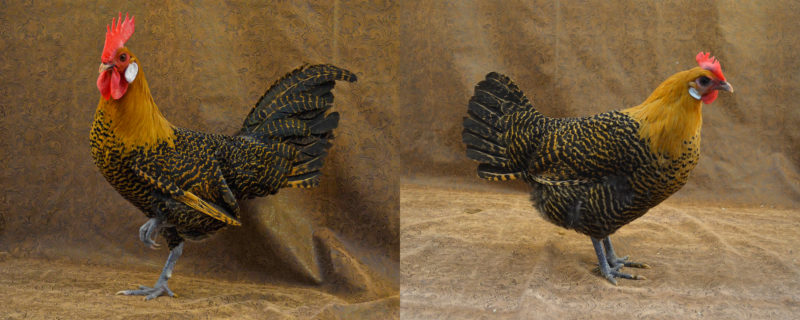
Campine males and females share similar markings.
Hen-Feathered Hubbies
The Campine is an ancient breed of Belgium, and its history goes back to a time when it’s believed that Julius Caesar returned to Rome with some of them, following a raiding campaign in the region. The males of this breed are known as being “hen-feathered,” meaning they’re similar in appearance and markings to the females of the breed. The goal of a good breeding program is to make both look as close to each other as possible.
Campines comes in two color varieties, silver and golden. It’s interesting to note that when golden males are crossed on to silver females, they produce auto-sexed offspring, with the female’s chicks having a reddish blush in their color and the male chicks having gray on the tops of their heads. Roosters mature and reach a weight of up to 6 pounds, and hens up to 4 pounds, according to the breed standard, although finding birds of this size will be a challenge. Many are much smaller. These fowl are active chickens and are suited for warm or moderate climates.
Campine hens can lay a respectable 170 to 200 white eggs a year and are non-setters, so a surrogate broody hen or artificial incubation will be a must if you want chicks.
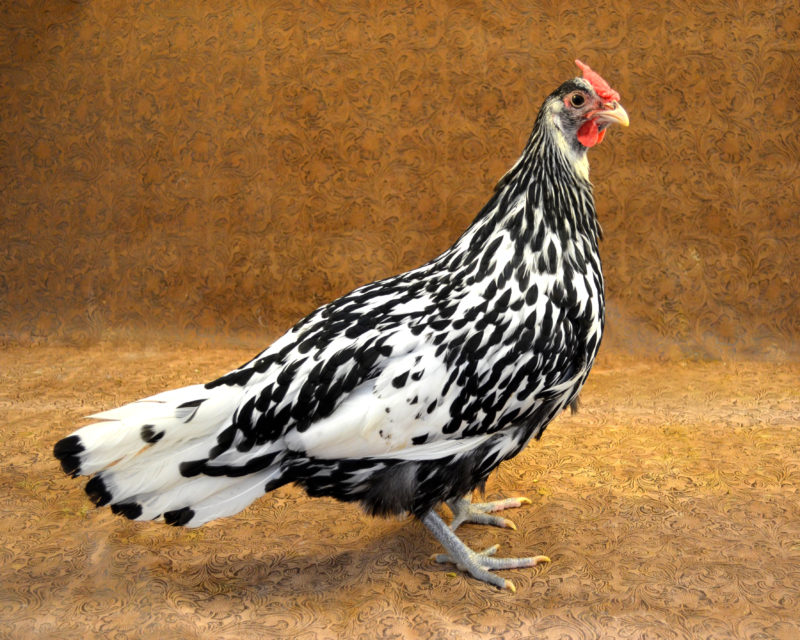
Hamburg pullet. The Hamburg is known as an active and alert breed.
A Well-Traveled Fowl
The history of the Hamburg chicken is a rather complex one stretching over many countries. One of the earliest written references of this chicken was by the Italian naturalist Aldrovandi , when, in 1630, he referred to it as “Turkish fowl” in his writings, indicating an origin in Turkey. Hamburg chickens were thought to have been taken by traders to Holland around the 14th century, where they first became known in Europe under a number of different names, including “pheasant fowl” because of their elegant and delicate appearance. The name “Hamburg” was adopted for the breed in the 1840s, since the best examples of these fowl were known from Holland and from the region surrounding Hamburg, Germany. The Dutch created the Silver Penciled and the Golden Penciled varieties, and when the breed arrived in England, British enthusiasts further refined the breed to create the Black, Silver Spangled, Golden Spangled, and White varieties.
It’s said that the very first chicken show ever held was between owners of Hamburg roosters in England around 1800. Owners argued over who had the most glorious rooster, so a competition was arranged at a local pub. The bartender sat as the judge and awarded a copper pot to the best bird.
The Hamburg eventually arrived in America in the mid-1800s and was valued for egg production. Today, these birds are still great layers, and unlike many breeds who drop production after a year or two, Hamburg hens continue laying large numbers of eggs over several years. They’re considered smallish birds, with males weighing up to 5 pounds and females only 4 pounds. They’re active foragers and can fly relatively well, so enclosures must have tops if you’re to keep them from wandering.
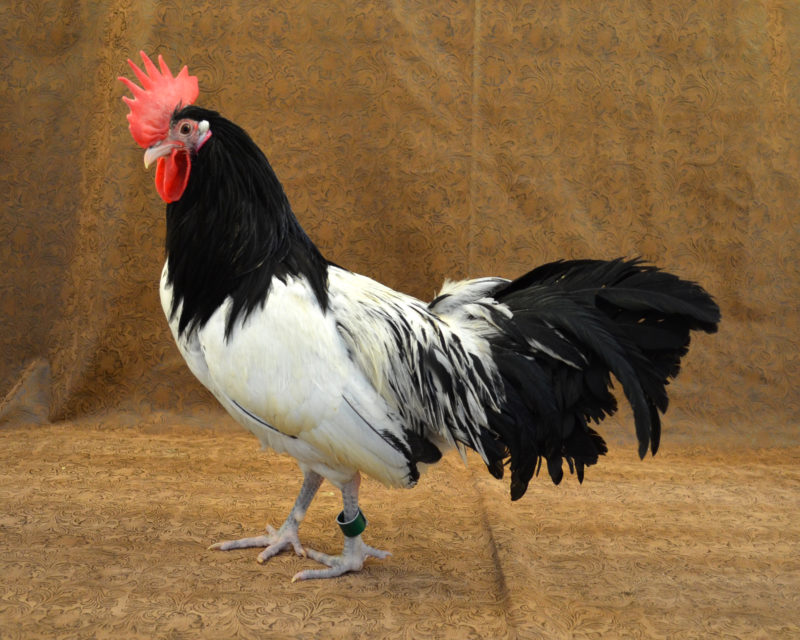
Rooster. The Lakenvelder’s ancestry stretches thousands of years into the past.
Shadow on a Sheet
The Lakenvelder is another Dutch breed developed in southern Holland and in nearby areas in Germany. These chickens have a white body with black hackles and flowing black tails. Their name is a reflection of this color pattern, and it translates to “white spread over a black field.” They were also known as “shadow on a sheet.” The Dutch painter and poultryman C.S.T. Van Gink wrote that these birds could be found near the Dutch village of Lakervelt as far back at 1727. They were known to have made their way to England in the late 1800s and to America by the early 1900s.
Egg production is one of the true values of the Lakenvelder. A hen can lay 150 to 200 eggs a year in her prime. Roosters can grow up to 5 pounds and hens up to 4 pounds. They’re active foragers and are alert for predators, so they would do well in a pastured production egg system. The hens are non-broody, so raising their own chicks won’t be a priority for these fowl.
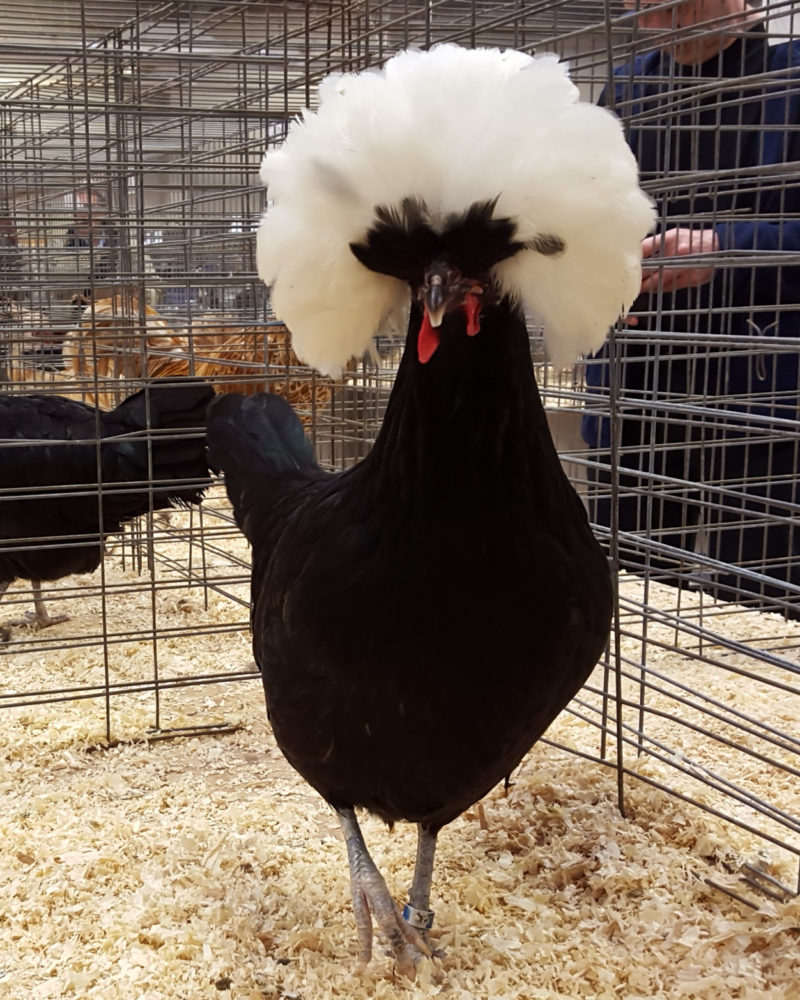
Polish pullet. Known for their dramatic crest, the Polish breed is exhibited frequently, but its roots are in productive egg-laying.
Ultimate Chicken Glam
If there’s one breed that stands out as one of the more glamourous to be found, it would have to be the Polish. This is largely due to the profuse and impressive topknot of feathers adorning their heads, like an elaborate women’s dress hat worn for special occasions. The topknot is present because the skulls of these birds grow slightly higher than others’, forming a bump on the top of its head like water spraying out of a fountain. Feathers grow up and outward from this area, creating a glorious crest.
Holland first received these chickens by way of Spain during the Spanish occupation of the region in the 16th century. The Dutch then further refined the crest of the breed, which at the time resembled the historic feathered caps worn by Polish soldiers. As a result, the name “Polish” was adopted for the birds. Although certainly impressive, the crests can obscure vision, making the birds a bit nervous in temperament, and certainly prone to predators they can’t see coming.
Early in its history, the Polish was valued as an egg producer, but over the years the breed has become prized show fowl and are found in no less than nine color varieties accepted by the APA. They’re still decent egg layers and can lay consistently once they start. The roosters can get up to 6 pounds and the hens up to 4 ½ pounds, but many are smaller from producers that focus more on show type than production.
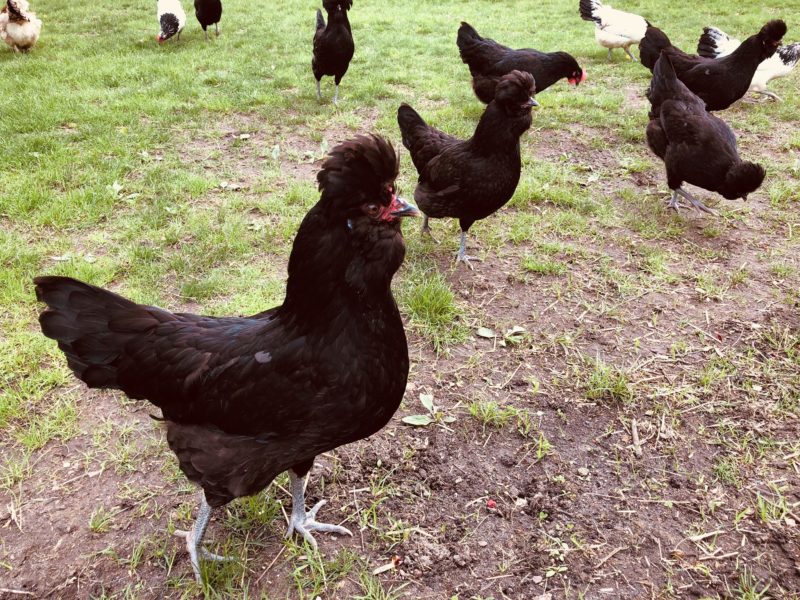
Crevecoeur Hens. The Crèvecœur is an endangered chicken breed today and is one of France’s oldest and finest birds.
A Tip-Top Table Bird
One of the most famous birds you probably have never heard of is the French breed known as the Crèvecœur. For centuries, it was considered the finest table bird you could present at a meal in France, yet today they’re among the rarest of chickens in both the U.S. and in its native country. Its origins go back to the 12th century in Normandy, and the name translates to mean “broken heart.” This name was given to the region in which the breed developed, because the original settlers of the area were broken hearted that the land wasn’t as fertile for crop production as they had hoped. (Thankfully it was a great place to raise chickens!) At one time, the birds were so valued that farmers could pay the annual lease on their farm to the landowner with several fattened birds of this breed.
The breed is often referred to as “Black Polish” because it too has an impressive topknot on its head. But unlike the Polish, the Crèvecœur was primarily a meat bird with a much broader and deeper body. Later, attention shifted from production to show birds, and the Crèvecœur breed started losing the meat qualities it was famous for. Thanks to recent efforts, this trend is being reversed, and the breed is beginning to find its way back to the dinner table. Well-bred roosters will grow up to 8 pounds and hens up to 6 ½ pounds. They’re typically peaceful birds and tolerate confinement well, which is a convenient attribute if housing them in yards, as free range offers considerable risk from predators. The hens are great layers of large white eggs but rarely become broody.
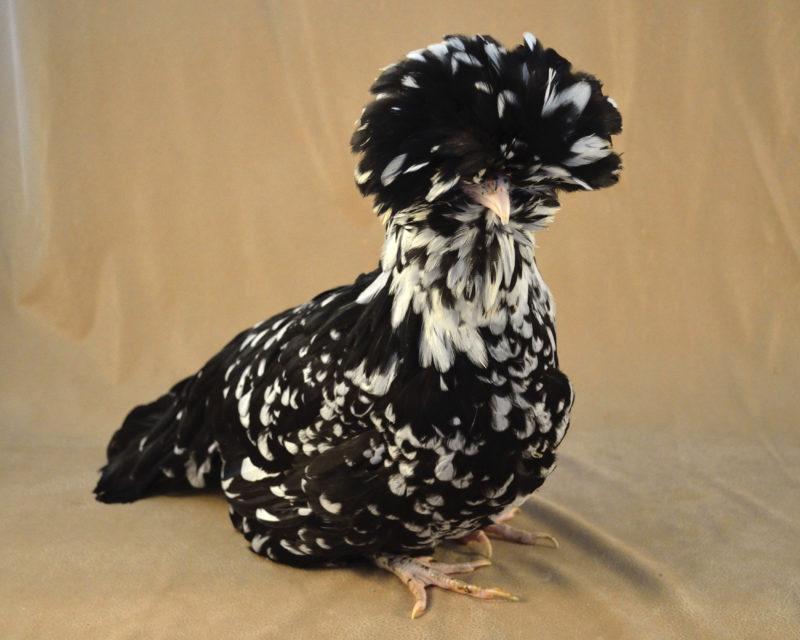
Due to its crossing with ancient breeds, one of the Houdan’s unique traits is its five toes.
Five-Toed Fowl
The Houdan is another breed created in Normandy and was a respectable egg layer and table bird for the Paris and London markets. It too has a topknot of feathers on its head, but is differentiated from the others since it has five toes, verses four like the other breeds. This is attributed to the incorporation of ancient five-toed fowl, such as the Dorking, into the foundation of the breed. The Dorking may also have contributed a nice meat-type body for the Houdan. Houdan chickens come in two color varieties in America, the mottled and the white, with the former being the most common variety found today. The white was developed in America in the early 20th century.
Fertility has always been considered excellent with the breed, and when Houdan roosters are crossed with other meat breeds, they’ll produce excellent, fast-growing table birds. Houdan roosters will mature up to a respectable 8 pounds and the hens up to 6 ½ pounds.
Like the other crested breeds, they’re typically peaceful birds, but care must be taken to protect them from predators that they will not see coming.
The continental chickens offer class and elegance and can be a delightful addition for the backyard flock. Keep in mind that the breeds with topknots may not mix well with non-crested birds, since, like predators, the crested birds won’t see them coming. Some may be more challenging than others to find because they are rare today. For more information on the breeds and to find producers and breed clubs, contact The Livestock Conservancy or the American Poultry Association.
Jeannette Beranger is the senior program manager for The Livestock Conservancy. She uses her knowledge to plan and implement conservation programs, conduct field research, and advise farmers in their endeavors with rare breeds. She is co-author of the best-selling book An Introduction to Heritage Breeds.












